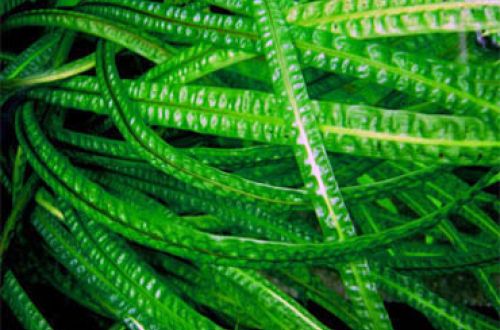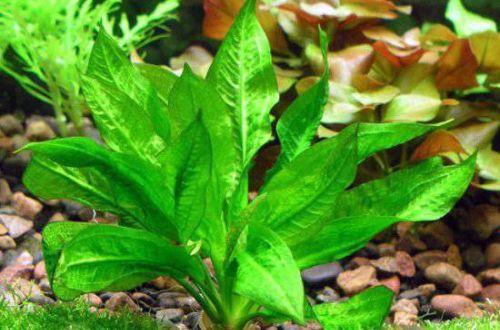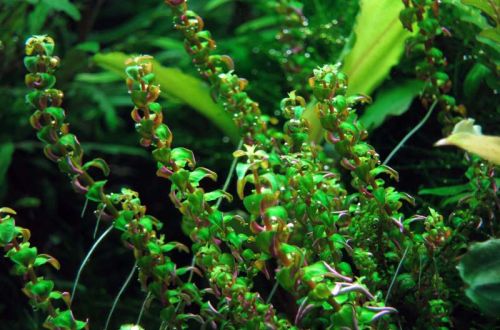
Lomariopsis
Lomariopsis, scientific name Lomariopsis cf. lineata. Despite the fixed name, the exact identity of this fern has not been established. In 2007, a research team using molecular analysis partially deciphered a DNA sequence that matched 97% of the Lomariopsis fern, which grows in Southeast Asia. However, in nature, it does not grow under water, but is fixed on the surface of trees, rocks.
“Aquarium” Lomariopsis is a gametophyte (not developed fern). First appeared in a private aquarium with the German specialist Christel Kasselman in 2001. Ten years later, it spread among hobbyists throughout Europe and soon ended up in the aquariums of North Americans.
Outwardly, it resembles young sprouts of liver moss (Monosolenium tenerum) and they are often confused. Here are some main differences:
— Lomariopsis cf. Lineata is a wide rounded “petals” without a cutout in the upper part, arranged in series one after another. Very thin, transparent, dark green, flexible. With a lack of light, the “petals” lengthen. Rhizoids (root hair-like cell organs) are arranged irregularly on the underside.
– Monosolenium tenerum in bright light, the “leaves” of moss acquire a rounded shape with a small notch on top. They have a moderate thickness of several layers of cells. In the light, dark and light spots are visible. Fragile, break easily. In low light, it begins to grow vertically and stretches strongly. The lower part is densely covered with rhizoids.
Growing is not a big deal. Bunches of fern are placed in crevices between stones, rocks, snags, or attached to the surface with a fishing line or special glue for plants. When the rhizoids develop, the fishing line can be removed. Not demanding to external conditions, perfectly adapts to a wide range of illumination, temperature, values of hydrochemical parameters.





